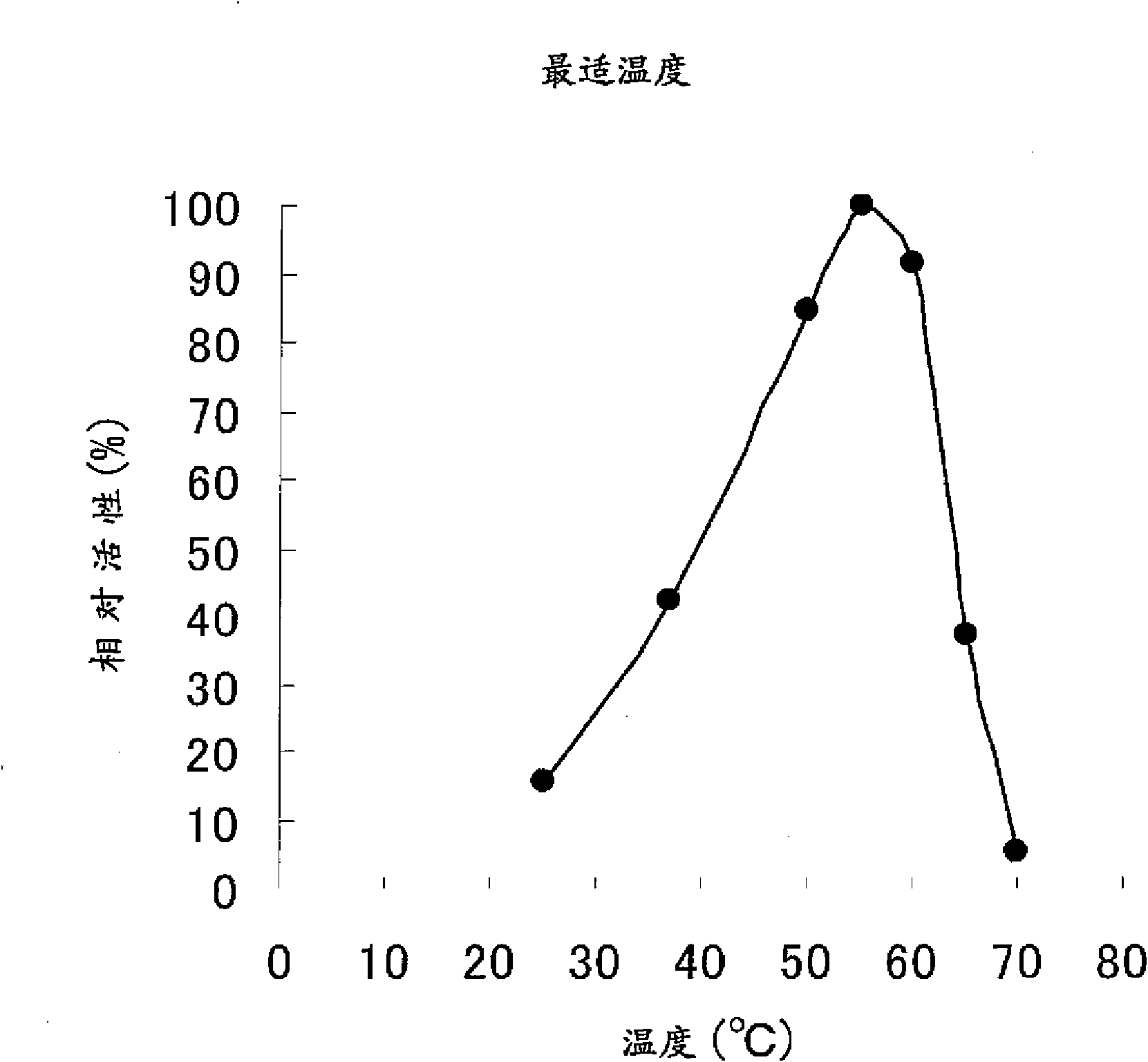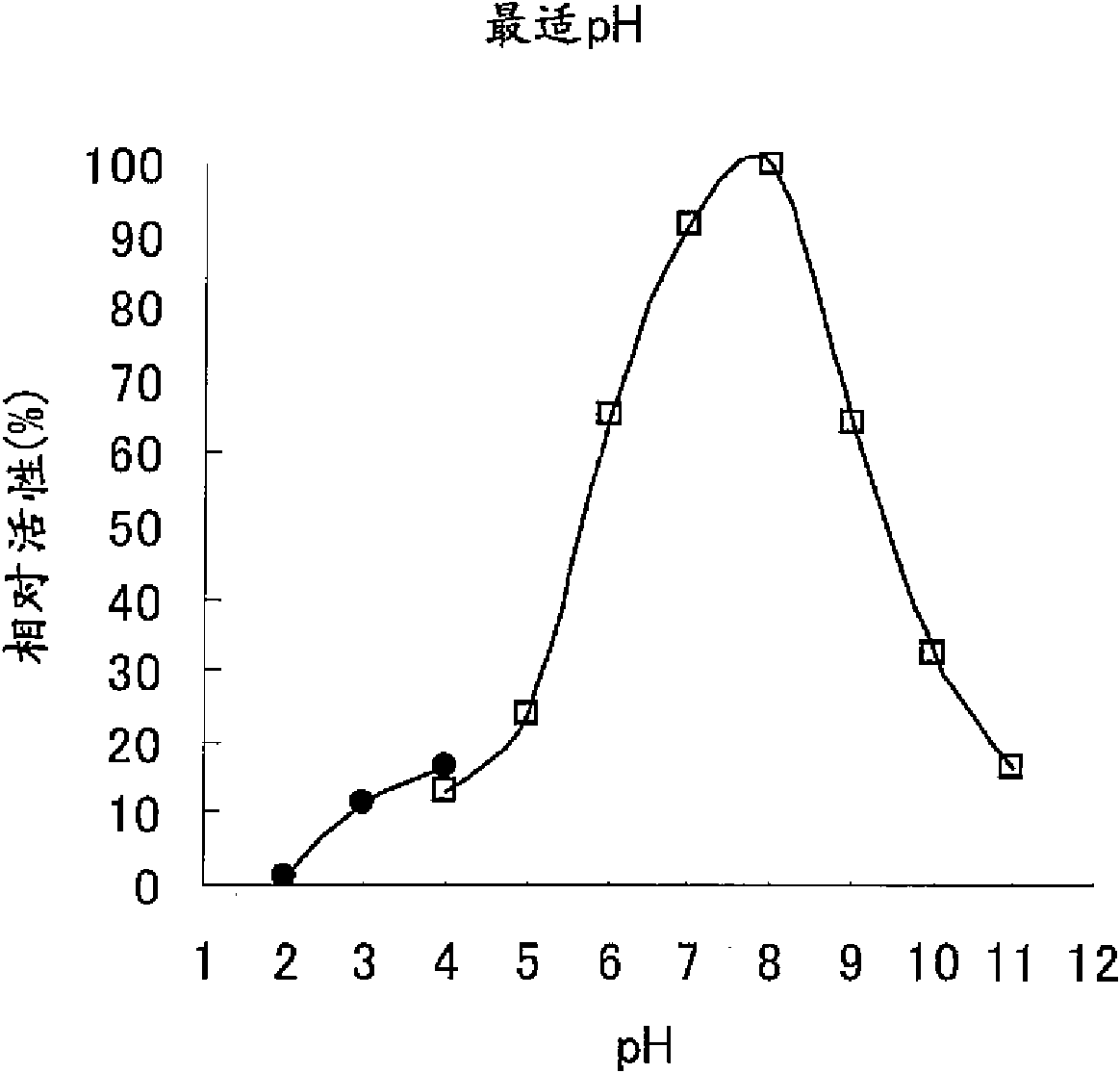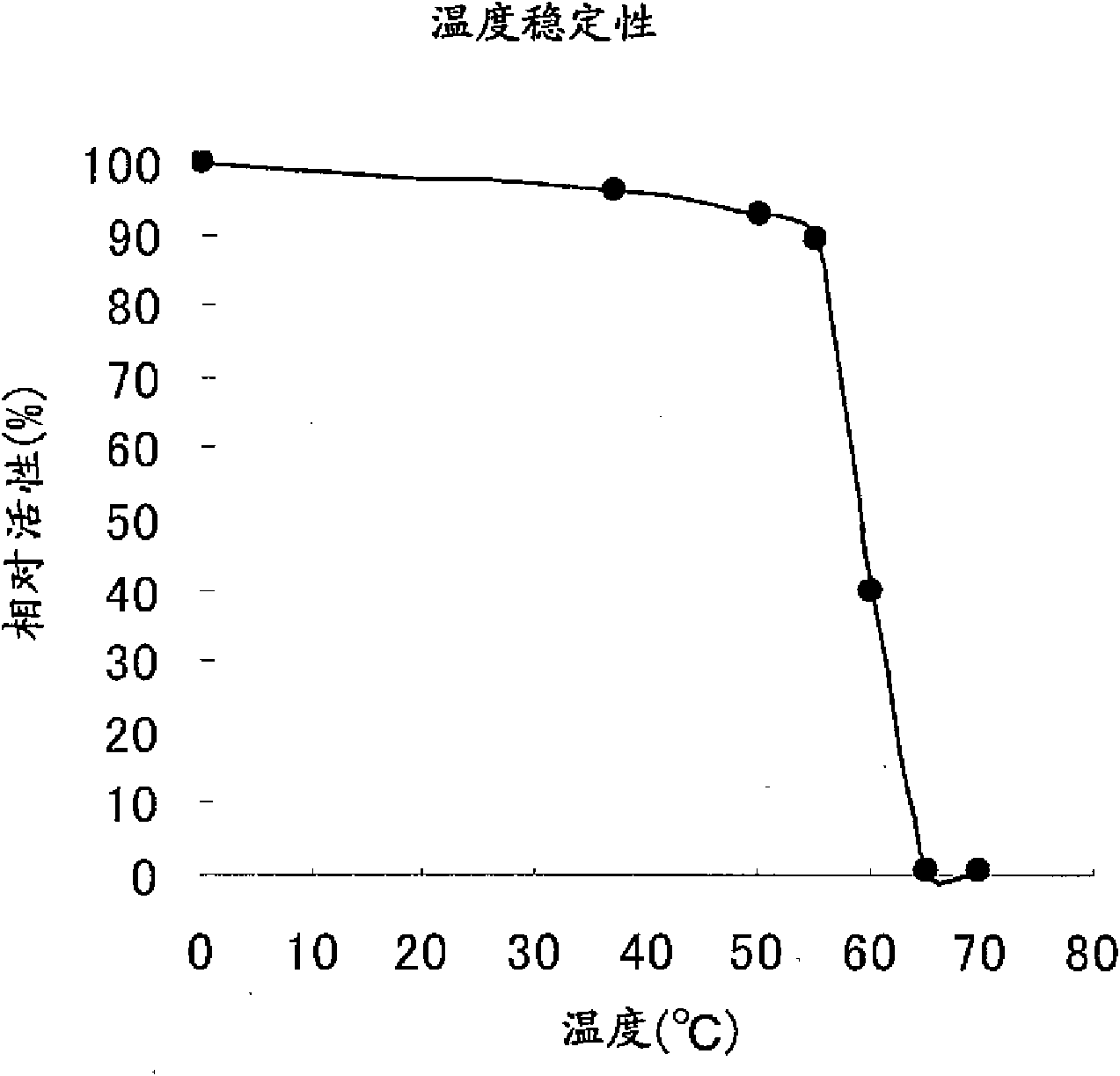Method for improvement of foods utilizing beta-amylase
一种食品改性、淀粉酶的技术,应用在焙烤食品、食品制备、生物化学设备和方法等方向,能够解决不适于制备高纯度的麦芽糖糖浆等问题
- Summary
- Abstract
- Description
- Claims
- Application Information
AI Technical Summary
Problems solved by technology
Method used
Image
Examples
preparation example Construction
[0105] (Preparation method of β-amylase)
[0106] Another aspect of the present invention provides a method for the preparation of β-amylase. In one aspect of the production method of the present invention, the step of cultivating Bacillus flexus having the ability to produce the present enzyme (β-amylase) (step (1)) and recovering from the cultured culture solution and / or bacterial cells Beta-amylase step (step (2)).
[0107]As the Bacillus flexus in the step (1), for example, the above-mentioned Bacillus flexus DSM1316, DSM1320, DSM1667, APC9451 and the like can be used. The culture method and culture conditions are not particularly limited as long as the target enzyme can be produced. That is, the method and culture conditions suitable for culturing the microorganisms to be used can be appropriately set with the production of the present enzyme as a condition. As a culture method, either liquid culture or solid culture may be used, and liquid culture is preferably used. ...
Embodiment
[0126]
[0127] The activity of beta-amylase was determined as follows. That is, 0.5 ml of enzyme solution was added to 0.5 ml of 0.1 M phosphate-hydrochloric acid buffer (pH 5.0) containing 1% soluble starch and 10 mM calcium acetate, and after incubation at 37° C. for 30 minutes, DNS solution (0.2% DNS, 80mM NaOH, 0.2M sodium potassium tartrate tetrahydrate) 2.5ml to stop the reaction. After the reaction stopped, it was boiled for 5 minutes, and the absorbance at a wavelength of 530 nm was measured. The amount of enzyme whose absorbance at a wavelength of 530 nm becomes 1 was defined as 1 unit (U).
[0128] 1. Confirmation of β-amylase derived from Bacillus flexus
[0129] For the four strains of Bacillus flexus DSM1316, DSM1320, DSM1667, and APC9451, the liquid medium with the composition shown in Table 1 was used for shaking culture at 30° C. for 3 days.
[0130] [Table 1]
[0131] β-amylase production medium
[0132] (w / v)
corn syrup
2%
...
PUM
 Login to View More
Login to View More Abstract
Description
Claims
Application Information
 Login to View More
Login to View More - R&D
- Intellectual Property
- Life Sciences
- Materials
- Tech Scout
- Unparalleled Data Quality
- Higher Quality Content
- 60% Fewer Hallucinations
Browse by: Latest US Patents, China's latest patents, Technical Efficacy Thesaurus, Application Domain, Technology Topic, Popular Technical Reports.
© 2025 PatSnap. All rights reserved.Legal|Privacy policy|Modern Slavery Act Transparency Statement|Sitemap|About US| Contact US: help@patsnap.com



